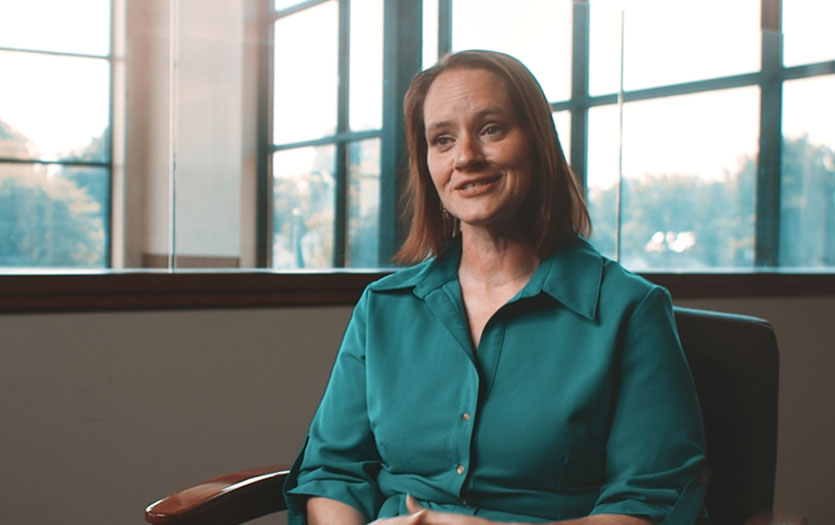
As we all continue to find our new normal there are still so many questions needing to be answered, including flattening the curve, testing, hospitalization, and the difference between COVID-19 and the seasonal flu. With the help of Jeffrey Boord, MD, MPH, Chief Quality & Safety Officer, we’re able to delve into the community’s ongoing questions and concerns regarding the current pandemic.
What does “flattening the curve” mean?
It means slowing the rate of new cases that develop on a daily or weekly basis. That allows us to be able to provide care to those that fall ill so that our health care system and infrastructure do not become overwhelmed.
Why is testing limited to only those patients with symptoms?
The short answer is that the test is not reliable in detecting disease in asymptomatic people. A few of these issues include:
- False negatives: You can have a high rate of what we call “false negative tests.” For example, if you’re someone who’s been very recently exposed, but not yet actively shedding the virus in the upper respiratory tract and I test you today, your test could be negative, but it doesn’t mean you won’t get sick in the future.
- Exposure risk: It also doesn’t mean that you’re not at risk for exposure in the future. A person who is asymptomatic and healthy with normal test results could still become sick if later exposed to someone with the illness. These tests don’t tell you anything about immunity to COVID-19 because those tests are currently not commercially available. For this reason, we need to focus our testing resources on evaluating those patients who are ill, have upper or lower respiratory symptoms, fever and might be suffering from COVID-19. That way we can direct them to the appropriate level of treatment.
- No short-term benefit: Keep in mind that patients that have mild illness may not necessarily benefit much from testing in the short term. That’s because your care management plan is not going to change based on the test result. If you come in with a fever and cough but aren’t severely ill, we’re going to tell you to self-isolate and continue supportive measures to manage your symptoms and recuperate at home. Also, make sure to practice those social distancing measures and proper hand hygiene to prevent the spread of illness to others. A positive or negative test is not going to change that advice.
NOTE: More testing information can be found on this FAQ page.
Which patients end up in the hospital?
There’s a range of severity with COVID-19 infections. About 80% of patients that contract COVID-19 have mild disease and will not require hospitalization. However, based on some of the data from other countries, such as China, we know that approximately 15% of patients may require hospitalization and about 5% may even require ICU-level care.
If you think about the math of Fort Wayne’s population, we have roughly 300,000 people in the Fort Wayne area. If 1% of them were to contract the illness and become ill enough to require ICU level care, or perhaps a ventilator, that means 3,000 residents would require an ICU bed and potentially a ventilator. If that happens all at once, that’s more than our regional health system has the capacity to take care of. This is why flattening the curve is so important. It allows us to sustainably manage the most seriously ill patients, get them better and get them home.
How is COVID-19 different from the seasonal flu?
There are some very important differences between COVID-19 and seasonal influenza. Those key differences include:
- Mortality rate: Seasonal influenza has a mortality rate of about 0.1%. COVID-19 has a mortality rate that’s about 2%. Depending on which studies you review in the medical literature, COVID-19 mortality risk is about 20 to 25 times higher than it is for seasonal influenza.
- No vaccine: Another difference is that we currently do not have a vaccine to reduce the risk of infection from COVID-19. Because it’s a novel virus that, up until about 14 weeks ago, we didn’t know existed. Whereas with seasonal influenza and other types of diseases we already have vaccines.
- No herd immunity: The other important thing is that we don’t have what is called “herd immunity.” Unlike seasonal influenza, which circulates every year and people have had prior exposure to, COVID-19 is a completely novel virus. No one has any prior immunity to this infection, meaning it spreads more rapidly in the population than other diseases that we’ve had prior exposure to.
How long do you expect this pandemic to last?
It’s hard to predict, but I think that we can expect this issue to be with us for a period of, at least, months. We expect to see cases for quite some time. In one aspect, that’s actually desirable because part of flattening the curve means you don’t get a whole bunch of cases at once, but rather the same number of cases are spread over a much longer time period. This way it’s manageable and we have the resources to take care of those that fall ill.
For information about Coronavirus (COVID-19), including screening resources and facility updates, click here.



